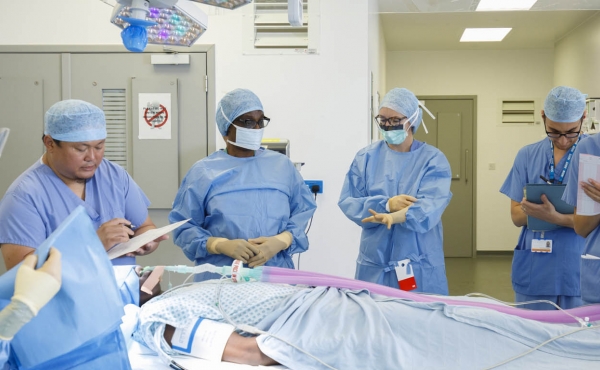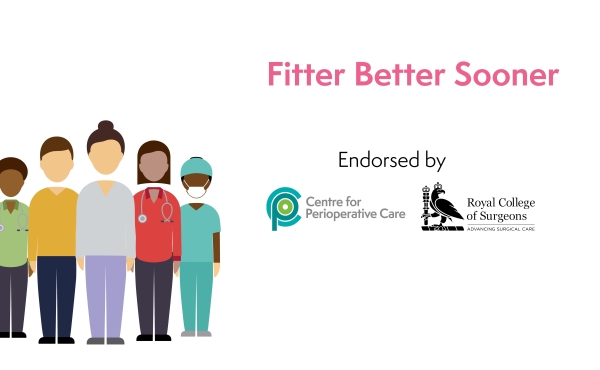Dedicated anaesthetic input into multidisciplinary care of trauma patients - Sandwell & West Birmingham Hospitals NHS Trust Trauma and Hip Fracture
We provide a seven-day consultant led theatre service for acute trauma and orthopaedic surgery. The ‘Perioperative Trauma Anaesthetist’ provides standardised care for all trauma patients through a standardised perioperative medicine pathway.
The Trauma Anaesthetist, i.e. the ‘anaesthetist of the week’ provides care for the full day theatre session for all seven days a week. There is an additional ‘perioperative ward anaesthetist’ who provides perioperative care in partnership with the orthogeriatrics and the wider team. This involves pre-optimization (including fluids, analgesia, medications etc.), structured risk assessment, communication with patients & family and medical management aimed at expediting early surgery and continued postoperative care enabling rapid rehabilitation.
The ‘Trauma ward anaesthetist’ joins the multidisciplinary board round on week days and performs a structured postoperative ward round for all hip fracture and high-risk patients. Continuous ongoing data collection enables us to provide feedback and quality improvement.
The lead anaesthetist is part of the multidisciplinary meeting conducted once every two weeks.
Standardisation in health care has been shown to have a positive impact on patient care. We would like to share our achievements and experience to enable and spread learning across the organisation.
Anaesthetists are important providers of perioperative care and perioperative optimization before and after major surgery and influence the long-term outcomes of patients such as return to previous state of fitness, disability free survival etc.
The simple process of standardization of care resulted in significant improvement in outcomes and ultimately quality of patient care. Our findings show that small investments in the perioperative environment can have large returns.
What did we change?
We “Standardised” our practice for the peri-operative management of patients with hip fracture care in 2015 in our hospital. We share our experiences and the findings below.
We were able to demonstrate significant improvements in perioperative care. The baseline data from 2013-14 is available from the 2014 National Sprint Audit2. It showed, we were lagging behind in several aspects of perioperative care such as compliance with regional anaesthesia, maintaining stable intraoperative haemodynamics, level of senior cover, etc.
The latest National hip fracture database (NHFD) report1 demonstrates significant improvements in several aspects of perioperative care as illustrated in the below graph. This is also available to view in the Anaesthesia Dash board section of the NHFD report published by the Royal college of Physicians.
Impacts of change:
We have achieved significant improvements in structure, process and outcome measures for patients, and the data is available in the latest National Hip Fracture Database Annual Report1. There are many outcomes which are a significant improvement from the 2014 National Sprint Audit2 (ASAP) findings.
How did we achieve change?
Producing good outcomes requires a prompt, coordinated, multidisciplinary approach, delivered by senior personnel, using integrated care pathways that standardize care and engagement of key stakeholders in this process.
Our primary goal was to improve quality of care, reduce variation and enable continuous measurement of data, analysis and feedback.
We took a very pragmatic approach to the issue of ‘variation in practice’ and strongly believed changes in ‘processes and structure’ of the service delivery are more likely to produce desired changes.
Anaesthetic techniques and perioperative care was standardised using standard operating procedures which were based on the best evidence and guidance available. We adopted the Plan, Do, Study and Act (PDSA) model for quality improvement leading to standardization of structure and processes of care leading to improved outcomes.
We provided perioperative care for the whole perioperative journey which includes optimizing analgesia, fluid status, background medical issues and expediting early surgery.
The continuous data collection and database which are capable of providing continual feedback and periodic run charts, along with standardized care and minimized variations in practice, not only with the anaesthetic but the whole perioperative period, we believe is the key to our success and improvement in outcomes which are sustainable long term.
What did it cost?
Our project was cost neutral providing good value for money.
To view a PDF of this case study click here




